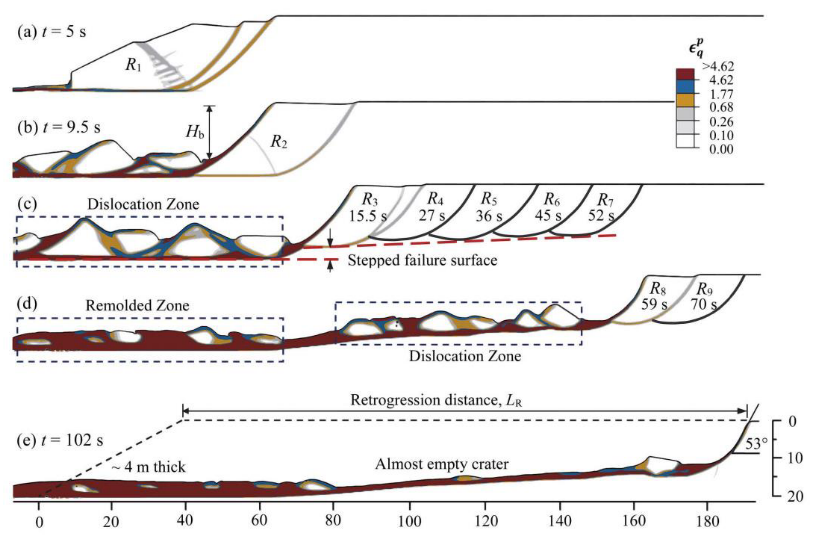Prof. Kenichi Soga and colleagues recently published three articles on geomechanics, particularly on the modeling of failure of geomaterials by using the Finite Element Method (FEM).
- Wang, C., Hawlader, B., Perret, D., & Soga, K. (2020). Effects of geometry and soil properties on type and retrogression of landslides in sensitive clays. Géotechnique, 1-15. https://doi.org/10.1680/jgeot.20.P.046
- Mallikarachchi, H. and Soga, K., 2020. Post-localisation analysis of drained and undrained dense sand with a nonlocal critical state model. Computers and Geotechnics, 124, p.103572. https://doi.org/10.1016/j.compgeo.2020.103572
- Mallikarachchi, H. and Soga, K. (2020) “A two‐scale constitutive framework for modelling localized deformation in saturated dilative hardening material,” International Journal for Numerical and Analytical Methods in Geomechanics. https://doi.org/10.1002/nag.3115
The first article published in Géotechnique discusses the effect of slope geometry and soil properties, such as strain-rate and strain-softening parameters, on the development of flow slides and spreads of sensitive clays. In their study, practical examples of sensitive-clay slopes which are commonly found in eastern Canada are considered and modeled by using the Eulerian FEM approach. Meanwhile, the second and third articles are published following the doctoral research work of Hansini, where she extended the Nor-Sand model to consider the effect of a nonlocal hardening and multi-scale consideration of bifurcation across the shear band, respectively. Her studies are carried out by using ABAQUS and mainly discussed the failure responses of biaxial compression specimens.
Below are some images that visually illustrate the contribution of each work. Please access the DOI links above for more details about the papers.

(left) Progressive failure in a typical flow slide [1]; (right) Undrained biaxial compression test with modeling of bifurcation in a single material point [2, 3]